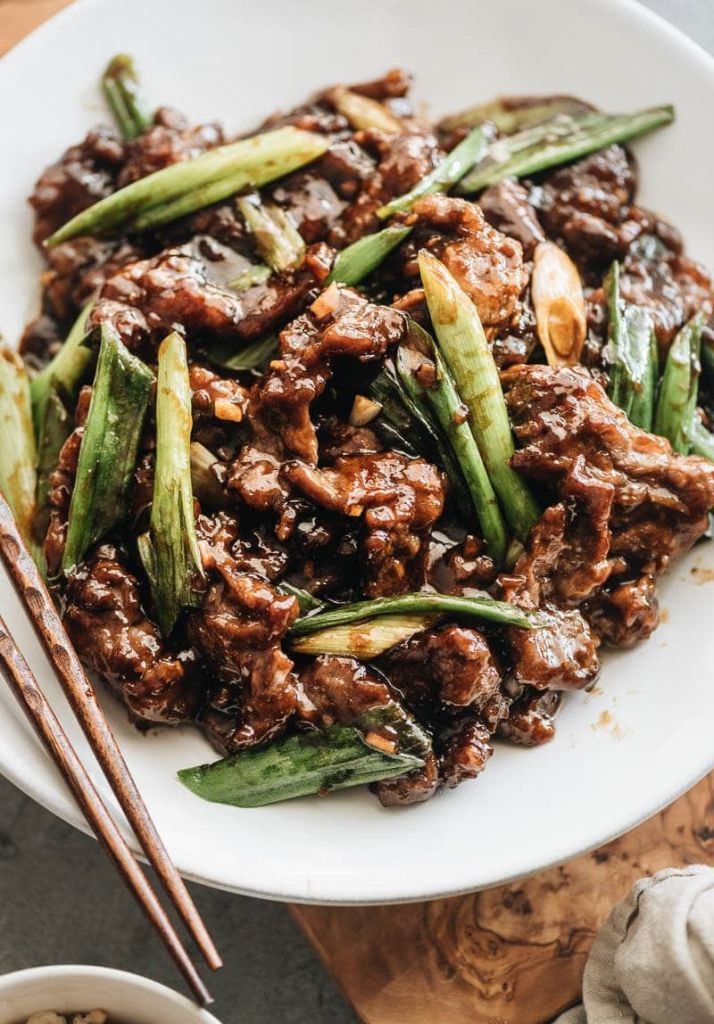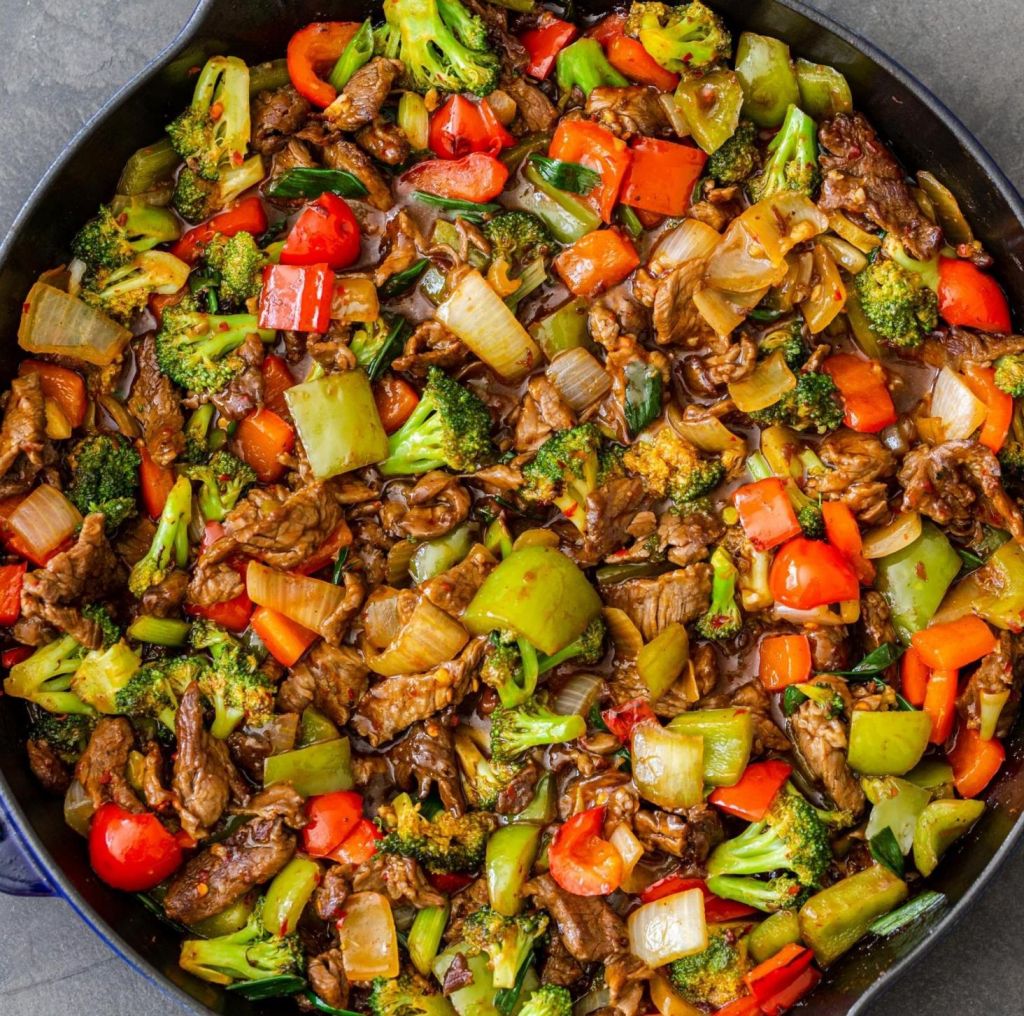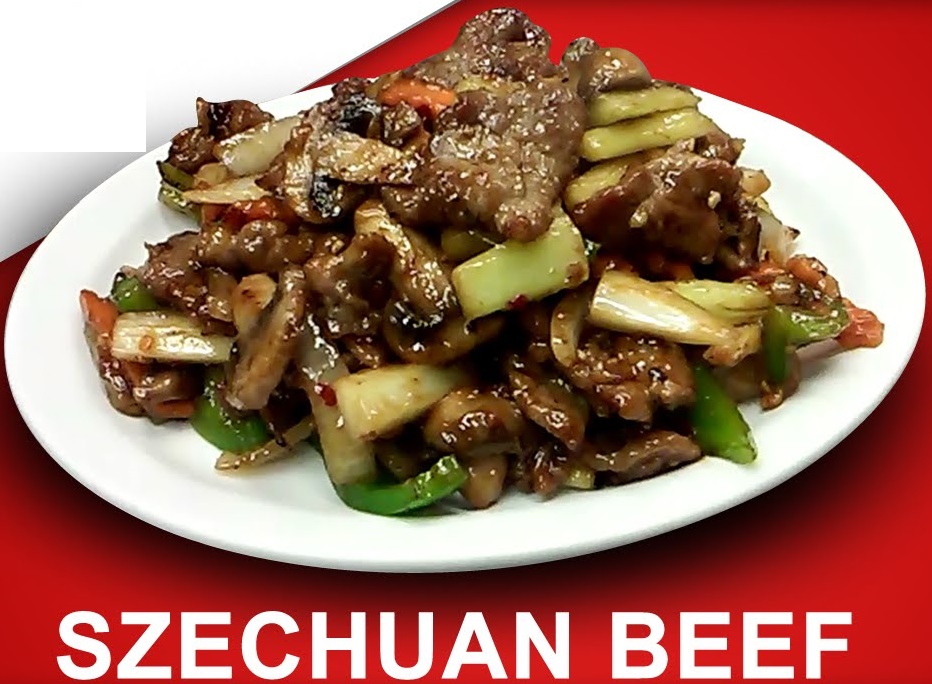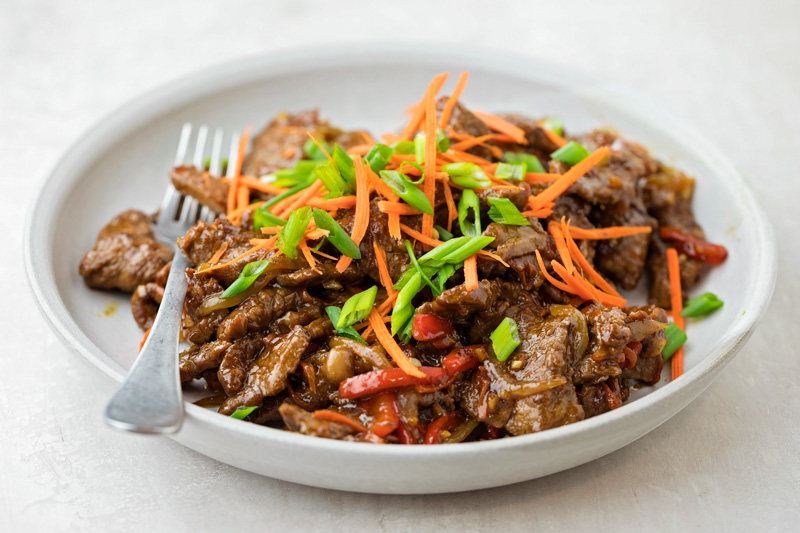Szechuan Vs Mongolian Vs Kung Pao Beef
There are so many Chinese restaurants spread across the globe today. Moreover, most of their cuisine is meat and fish-based with vegetable garnishing. These meals look alike but are not prepared with the same ingredients or techniques.
Chinese cuisine is a combination of several cuisines from the numerous regions of China. They include Szechuan, Hunan, Fujian, Zhejiang, Anhui, Shandong, Cantonese, and Jiangsu. These are the traditional cuisines in China that are greatly influenced by the culture and region.
The aroma of these cuisines will surely cause your stomach to grumble and your mouth to salivate. Let's take a closer look at the differences between Mongolian beef Vs. Hunan beef Vs. Szechuan beef without further ado. Starting from the origin to the other differences.

ORIGINS OF MONGOLIAN BEEF VS. HUNAN BEEF VS. SZECHUAN BEEF
The origin of Mongolian beef is not traceable to the Mongolians. It is a special Chinese dish that originated from Taiwan, a place where Chinese barbecue eateries first appeared. It is referred to as Mongolian beef because it contains a lot of meats.
Hunan beef is one of the meat dishes that originated from more than one province in China. It is traceable to the western Hunan region, the Dongting Lake, and the Xiang riverside. These regions are known for their heavy use of spices in their meals. Hunan is literally translated as south of Lake Dongting.
Szechuan beef originated from the southwestern part of China called Szechuan. It is also known as Sichuan. Szechuan implies four rivers, which are the major rivers in this region- Tuo, Min, Jinsha, and Jailing.
Szechuan is not only a place but also a name of local Chinese cuisine that is widely served. In 2011, UNESCO announced Szechuan as the City of Gastronomy for its distinctive food culture.
What is Mongolian beef?

Mongolian beef is made from thin slices of meat, preferably flank steak, steamed in a brown soy sauce, mixed with vegetables, and eaten with either noodles or rice. It sometimes contains cabbage, hoisin sauce, scallions, mushrooms, and green onions. Mongolian beef tastes mild and sweet.
What is Hunan beef?

Hunan is not just a region in China but also one of their local dishes that is renowned for its high level of spiciness. Hunan beef is a spicy Chinese dish that is used to eat grains like rice and cellophane noodles. The primary ingredients for preparing this meal are garlic and chili pepper.
What is Szechuan beef?

Szechuan beef is a dish that is distinguished by its bolder flavor and milder taste. The primary ingredients used in preparing this stir-fry meal are garlic, chili pepper, and peppercorn. The bolder flavor and unique taste result from the peppercorn used instead of other pepper forms such as white or black.
DIFFERENCE BETWEEN MONGOLIAN BEEF VS. HUNAN BEEF Vs. SZECHUAN BEEF
If you have ever been to a Chinese restaurant and got confused about which of the stir-fry to order alongside your meal. Read on to find the difference between Mongolian beef Vs. Hunan beef Vs. Szechuan beef. These three beef dishes are not only addictive but also attractive.

1. Cooking Technique
Mongolian beef is cooked on high heat in a griddle pan, and the cooking technique employed is majorly stir-frying. The vegetables, cabbage, and beef are thinly sliced to speed up the cooking time. They are mixed and cooked together in a hoisin sauce. The color of the Mongolian sauce is brown and thick.
The beef used in making Hunan beef is marinated for hours before the cooking time. It is usually fried before being added to the sauce. The sauce is thicker than the other two and is as brown as Mongolian beef. The cooking technique for this Chinese cuisine is stewing, braising, smoking, frying, and marinating.
Szechuan, on the other hand, can either be marinated, steamed, braised, or stir-fried. The cooking method employed is dependent on the chef. Moreover, the beef for Szechuan beef is marinated for less than an hour before the cooking time. The color of Szechuan sauce is reddish.
2. Taste And Flavor
Mongolian beef is not as spicy as the other two dishes. It contains less chili and pepper. Hunan has more broccoli than Mongolian and Szechuan beef. It is the most spiced of them all. However, the degree of chili and other spices in the dish is dependent on the quantity used.
Szechuan, on the other hand, has a sweeter taste but yet prickly. The peppercorn in Szechuan is responsible for the citrusy taste because it is from the citrus family. The combination of peppercorn and other spices creates a numbing sensation on your taste buds.
3. Ingredients
Without the garlic, ginger, and chilies, the taste of these Chinese cuisines is not pungent. Mongolian beef has more vegetables and contains zero bean paste. Most of the ingredients are freshly bought and not dried.
Hunan beef is made with a lot of dried chili pepper, ground chilies with its seed, anise pepper, garlic, ginger, shallots, scallions, salt, sugar, sherry, and soy sauce. However, it has less sauce and looks drier than Szechuan and Mongolian beef.
The ingredients for making Szechuan beef are processed, pickled, salted, and dried. This local cuisine requires loads of Sichuan peppercorns and a lot of chili bean paste. The chili bean paste is made from a mixture of soybeans, chilies, fermented broad beans, salt, and rice.
Besides, the peppercorns are obtained from the bark of a plant named Zanthoxylum simulans. Combining all the ingredients used in preparing Szechuan beef gives it both a hot and sour taste.
4. The Dish Signature
The distinguished taste of Mongolian beef is gotten from the stir-fry cooking method used. In comparison, Hunan beef's unique taste is derived from the different kinds of chili pepper used in making the sauce. The peppercorn is responsible for the distinguished taste of Szechuan.
HUNAN BEEF Vs. SZECHUAN BEEF
When it comes to ingredients and preparation, Hunan beef typically uses smoked or cured beef as well as fresh ingredients such as fresh chili peppers. Though Szechuan beef contains chili peppers and garlic, it also contains a special ingredient known as Szechuan peppercorn.
Hunan beef would have more vegetables and a crunchier texture. Szechuan beef has a sweet/spicy and complex flavor due to the distinctive tingly numbing sensation it produces when eaten, whereas Hunan beef has a much hotter flavor.

SZECHUAN BEEF VS MONGOLIAN BEEF
Sichuan was previously romanized as Szechuan. So, while we still refer to that region's cuisine as Szechuan, the correct romanization is Sichuan. Sichuan means "four rivers," referring to the four major rivers in Sichuan Province: Jialing, Jinsha, Min, and Tuo.
Mongolian is associated with Mongolia (a landlocked sovereign state in East Asia). The Mongolian population in China is more than double that of the actual state of Mongolia, and Chinese Mongols are known as Mnggz in pinyin.
Conclusion
We hope that the next time you visit any Chinese restaurant near you, you will be able to tell the difference between Mongolian beef Vs. Hunan beef Vs. Szechuan beef.
Thx, beefsteakveg
Frequently Asked Questions
Is Hunan beef the same as Mongolian beef?
Hunan beef is also spicier than Mongolian beef, which is sweeter due to the addition of soy sauce and brown sugar. Hunan beef also contains more vegetable components, whereas Mongolian beef is typically served with scallions or mixed vegetables.
Which is hotter Szechuan beef or Hunan beef?
Hunan beef has a much hotter flavor, whereas Szechuan beef has a sweeter and spicy flavor. That is the primary distinction, but it is a little more complicated than that. They can be difficult to distinguish at first glance, but the main distinction is in their composition, texture, and level of spiciness.
What is difference between Szechuan and Hunan?
While both are spicy and savory, Hunan chicken is known for its distinct "dry heat" flavor, whereas Szechuan chicken is fiery and mouth-numbing. Hunan chicken has a tangy flavor, whereas Szechuan chicken is sweeter.
pruittspecculp1971.blogspot.com
Source: https://beefsteakveg.com/difference-between-mongolian-beef-vs-hunan-beef-vs-szechuan-beef/
0 Response to "Szechuan Vs Mongolian Vs Kung Pao Beef"
Post a Comment